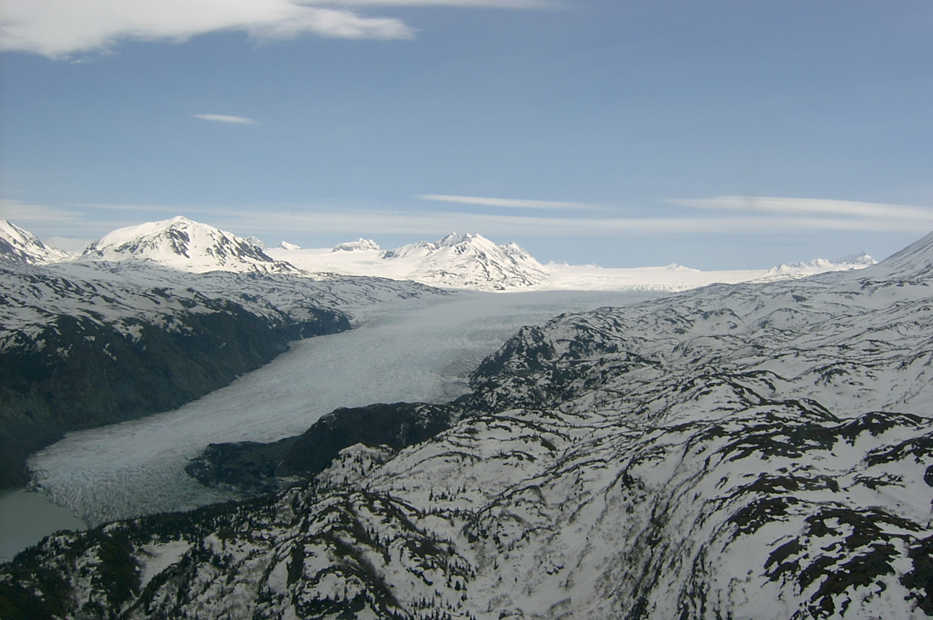What is “wilderness”? It’s much easier to say what it isn’t than what it is. It certainly isn’t Central Park. Sometimes it’s tough to acknowledge that Kenai National Wildlife Refuge has wilderness with the lights of Anchorage glowing on the northern horizon during winter. It’s one of those intangible concepts that depends on the eye of the beholder.
Wilderness comes from the Old English “wildeornes” or “land inhabited only by wild animals (deer).” The more recent Oxford Dictionary defines it as “an uncultivated, uninhabited, and inhospitable region” and sometimes “a neglected or abandoned area of a garden or town.” None of this really jives well with the Alaskan version of wilderness that is alive with wildlife that has sustained Native communities for thousands of years.
Wilderness advocates often distinguish between little “w” and big “W.” The uncapitalized version of wilderness is everything mentioned above. The capitalized version refers to Wilderness specifically designated by Congress under the Wilderness Act, legislation signed by President Lyndon Johnson on September 3, 1964.
Over 750 Big-W units now comprise the National Wilderness Preservation System, encompassing 110 million acres of Federally-managed lands in 44 states and Puerto Rico, and representing 5 percent of land in the U.S. Here on the Kenai National Wildlife Refuge, 1.3 million acres are designated as Kenai Wilderness in three units: Mystery Creek, Andrew Simons, and Dave Spencer.
The Wilderness Act defines Kenai Wilderness for us: “A wilderness, in contrast with those areas where man and his own works dominate the landscape, is hereby recognized as an area where the earth and its community of life are untrammeled by man, where man himself is a visitor who does not remain.” The key word here is “untrammeled,” which the Oxford Dictionary defines as “not deprived of freedom of action or expression; not restricted or hampered.” Another way of saying this is that human actions and influence are “unintentional.”
This all makes sense when we consider that early pioneers might have left behind a now-decaying trapper’s log cabin, the remnants of a mining sluice, or even a new forest that regenerates in the aftermath of an escaped campfire. But how do we interpret what Wilderness is (or should be) in a world in which the climate itself is driven by carbon and methane emissions being pumped into the atmosphere by human engineering? The climate is what ultimately determines the distribution of plants and animals, fire return intervals, insect outbreaks, whether precipitation falls as snow or rain or at all, and the hydrologic regime that sustains returning salmon. Contemporary climate change is a game changer. Or is it?
I just returned from an engaging 3-day workshop in Missoula that was hosted by the Aldo Leopold Wilderness Institute and the University of Montana’s Wilderness Institute. Participants were invited staff from the U.S. Fish and Wildlife Service, Bureau of Land Management, U.S. Forest Service and the National Park Service — the agencies charged with managing Wilderness. The discussion centered on developing guidance for ecological restoration in Wilderness, including in response to contemporary climate change. To cut to the chase, the consensus was that climate change itself does not “trammel” Wilderness because it is NOT intentional despite being driven, at least in part, by humans.
However, a changing climate affects so many ecological processes that it will become increasingly more difficult to describe any part of our world as “natural.” I suspect our collective perception of Kenai Wilderness is a boreal ecosystem dominated by landscape-scale wildfires every few decades or even centuries that sustain white and black spruce forests, coupled with the Harding Icefield that feeds our glacial lakes and streams, all inhabited by moose, bear, mountain goats, Dall sheep, wolves, salmon and waterfowl. In addition to non-motorized ways of getting around, we enjoy these resources by float-plane, snowmachines and motorboats in Kenai Wilderness, modes of transport that were allowed in Kenai Wilderness by the Alaska National Interest Lands Conservation Act in 1980.
But in my crystal ball, I don’t see that vision extending into the future. Without some deliberate human intervention, we are likely to see Calamagrostis grasslands in what was white and Lutz spruce forest sustained by human-caused fires that support ring-necked pheasants, kettle lakes unable to provide habitats for fish and waterfowl because they’ve been filled by elodea or have dried up, nonglacial streams too warm to sustain salmon, slow-moving streams clogged by reed canary grass and northern pike, fewer moose co-existing with Sitka black-tailed deer, escaped lodgepole pine forests that support feral turkeys, diminishing alpine tundra unable to sustain harvestable populations of Dall sheep because of an encroaching treeline and invading orange hawkweed, and not enough persistent snow cover to allow travel by snowmachines.
OK, that’s pretty much a downer. The future Kenai Wilderness will likely track somewhere between what we have now and what my cloudy crystal ball is telling me. But this scenario does highlight the need for Refuge biologists to think creatively about how to “restore” Wilderness in a climate-changing world within the bounds set by Congress. It’s a tall order but also reflects how management and policy evolve with new challenges.
This year, 2014, marks the 50th anniversary of the Wilderness Act. Watch for upcoming celebratory events both locally and nationally. See our website (kenai.fws.gov) for more on information on Kenai Wilderness and its management.
John Morton is the supervisory biologist at Kenai National Wildlife Refuge.

